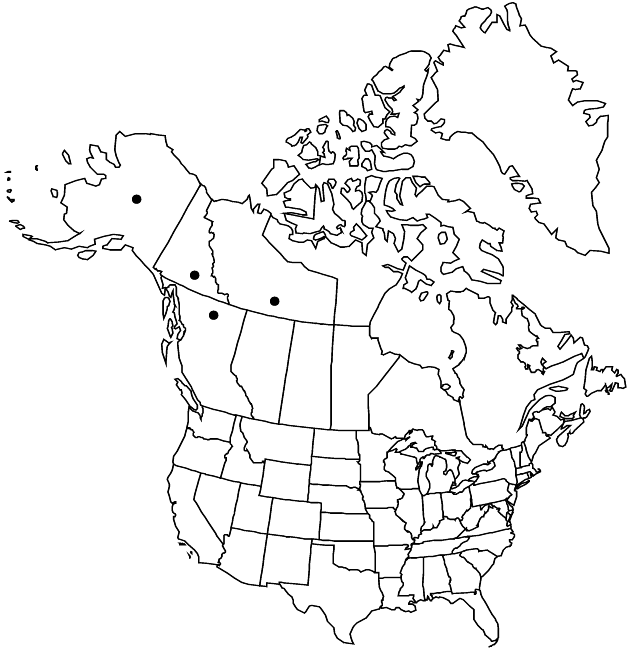Erigeron denalii
Amer. J. Bot. 32: 289. 1945.
Perennials, 1–5 cm; taprooted, caudices diffuse with extensive systems of rhizomelike, relatively long and slender branches. Stems erect (simple, ± scapiform), villous, granular-glandular. Leaves basal (persistent) and cauline; blades spatulate to oblanceolate-spatulate, 10–20 × 2–4 (–5) mm, mid larger than basal and proximal, margins entire or shallowly (2–) 3-lobed or toothed apically (apices obtuse to nearly truncate), faces moderately villous, minutely glandular. Heads 1. Involucres (4–) 5–7 × 9–12 mm. Phyllaries in 2 (–3) series, densely lanate-villous (hairs to 3 mm, often with dark purple cross-walls), glandular. Ray-florets 30–55; corollas white to lavender, 4–8 mm, laminae (filiform to narrowly straplike, 0.3–2 mm wide, often involute) erect, rarely spreading, not coiling or reflexing. Disc-florets 3.8–4.8 mm. Cypselae 3–3.8 mm, 2-nerved, faces strigillose to strigoso-hirsute; pappi: outer 0 (or inconspicuous), inner of 20–25 (usually ± purple-red tinged, sometimes whitish, variable within populations) bristles.
Phenology: Flowering Jun–Aug.
Habitat: Open alpine and subalpine habitats, tundra slopes, openings in spruce-fir woods, gravelly and shaley scree, cut banks
Elevation: 900–2200 m
Distribution

B.C., N.W.T., Yukon, Alaska.
Discussion
Erigeron denalii and E. purpuratus are similar and probably closely related; the two appear to be partially sympatric; differences in vestiture and leaf morphology are constant. The habitat of E. purpuratus, sandy or gravelly alluvium, also is remarkably constant and distinct from that of E. denalii. Apparently correlated with the habitat, plants of E. purpuratus almost always develop a relatively long and slender, woody taproot; taproots of E. denalii apparently are less well defined and often are not collected.
Plants of the type collection of Erigeron mexiae have ray corollas with relatively broad laminae (1.5–2 mm wide); ray corolla width is variable in E. denalii, and E. mexiae is regarded here as an extreme variant within the species. In other characters, there appears to be no difference.
Selected References
None.